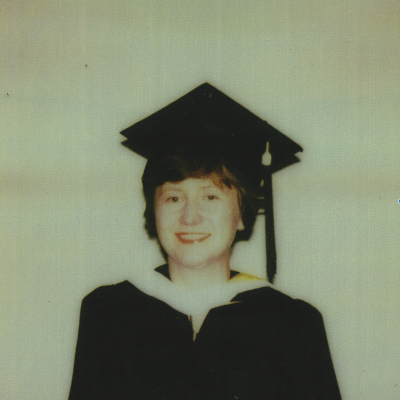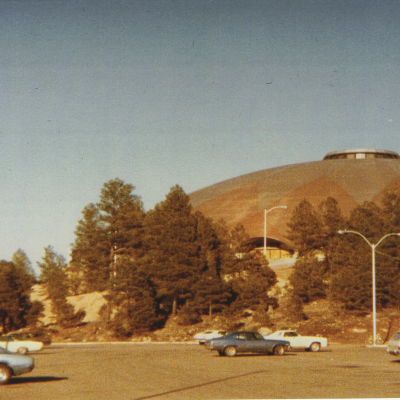Linda Hughes: Alumni Memories
It was a long time ago when I first arrived at NAU. In fact, it was 1977. The school was going to offer a Master’s Degree in History. To promote the new program, out-of-state tuition was dropped and teaching assistantships were available. For me, a young woman from the Midwest just completing my Bachelor’s, it was too good to pass up. I would be able to explore the Southwest while getting my master’s. The degree was important to me as I wanted to teach at the community college level.

I found an apartment at the Flagstaff Village on West Saunders, adjacent to South Campus. I could see the San Francisco Peaks from my kitchen window. I could also walk to the university via a shortcut around a protected prairie dog town, through South Campus, and up to the History Building. The halls were deserted on the summer day when I first made that trek. A smiling man walked toward me and introduced himself as Del West, History Professor. I was reciprocating and just ready to explain where Quincy College, my Franciscan alma mater, was located, when he said, “Oh, how is F.J.?” I’m sure my mouth fell open.
F.J., Father Francis Jerome Gray, was one of the most popular history professors at Q.C. But how could Prof. West possibly know that? It seemed that Del West’s field was the Renaissance, and he had done research in the extensive collection at Q.C. I took this as a very good omen, sure that my time at NAU would be a wonderful experience. And it was.

Bill Lyon was head of the history department then. He was a very generous and considerate man. Knowing that his out-of-state students would be away from home on Thanksgiving, he invited us to share in his family’s celebration. On another occasion, Phil Rulon, the head of my committee, invited us to his home. He spurred my interest in Western art with his own beautiful collection.
The teaching assistants shared an office with rotating hours. Those on my schedule became good friends. Mark Alfieri went on to law school; Beth Bischof from California took weekend trips to explore the area with me; and our other colleagues included David Hood from Erie, PA, and Earl Norwood, a retired military man. Earl and his wife explored on their own, but the rest of us would pile in my car to study and picnic in Oak Creek Canyon or eat and investigate Tlaquepaque, the arts and crafts village in Sedona.

It was an exciting time to be at NAU. South Campus was new; in fact, the Dome was not quite finished when I arrived. Dr. Walkup was the university president. The Homecoming Parade was very special with the elaborate costumes of the guests from the Aztec Nation. Best of all was a chance to see the Navajo Code Talkers in person! Wow, talk about living history. Many of these heroes were wearing their uniforms, although some couldn’t quite fasten all the buttons on their jackets anymore.
The speaker that year was to be Bob Hope, but Bing Crosby died that week so Bill Cosby filled in for him, flying in special from Reno. (I know, but he was greatly admired and respected at that time.)

The days flew by. Dr. Rulon and the rest of my committee, Del West and Monte Poen, a great guy who wrote The Letters Harry Truman Never Mailed, encouraged me to work hard on my thesis, “History’s Pedagogical Merry-Go-Round.” I was already busy with classes, my assistantship, and serving as President of the History Honors Society Phi Alpha Theta, but later, I was glad they pushed me. Because I only had a couple of classes and the final draft of my thesis to complete that summer, I was allowed to walk in the graduation ceremony. Earl was the only other one of us to do so, but the rest of the first group in the History master’s program were there to cheer us on. Gov. Bruce Babbitt and Sen. Barry Goldwater were the speakers at the 1978 graduation exercises.
By the time my master’s degree and Phi Kappa Phi Honors Certificates arrived at my home in Quincy, Illinois, I was already teaching in the Open Learning Center at John Wood Community College. Years later, our little group bought a brick for the Old Main restoration to tell the world, “We were here, and we were first!”
– Linda Hughes, member of the first Master’s in History class at NAU
